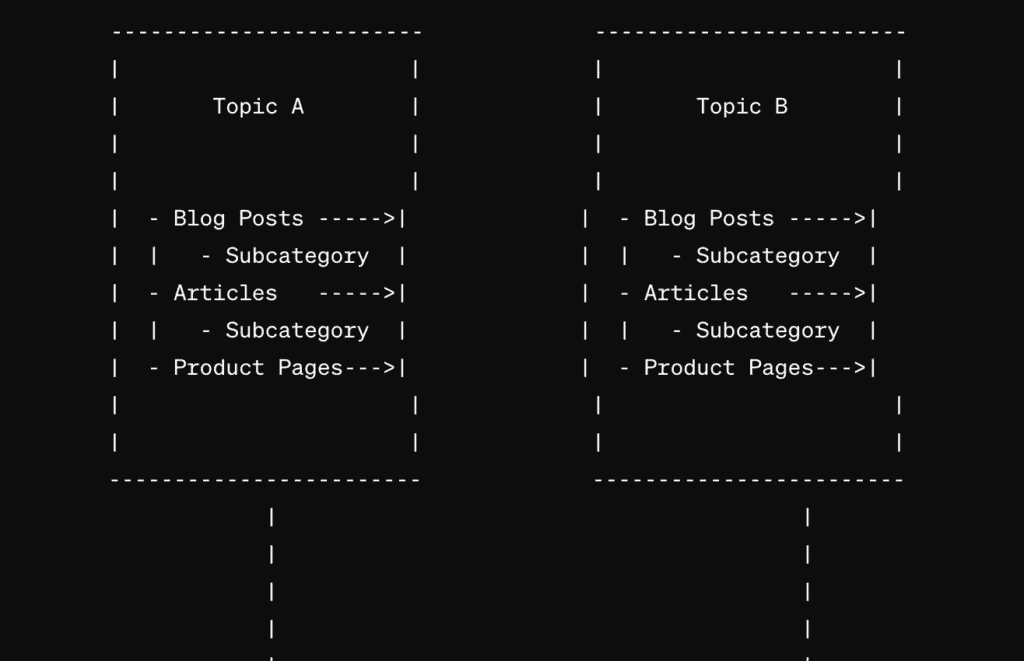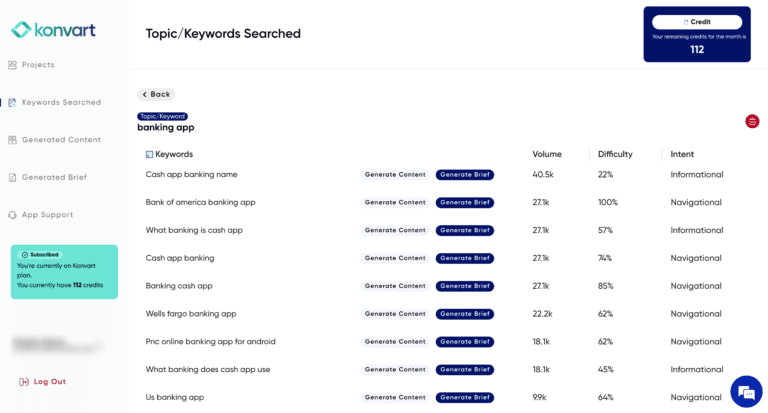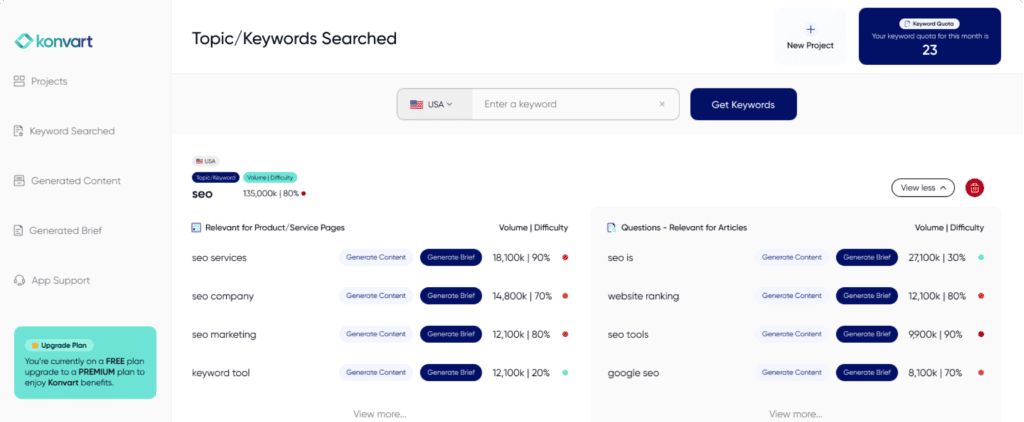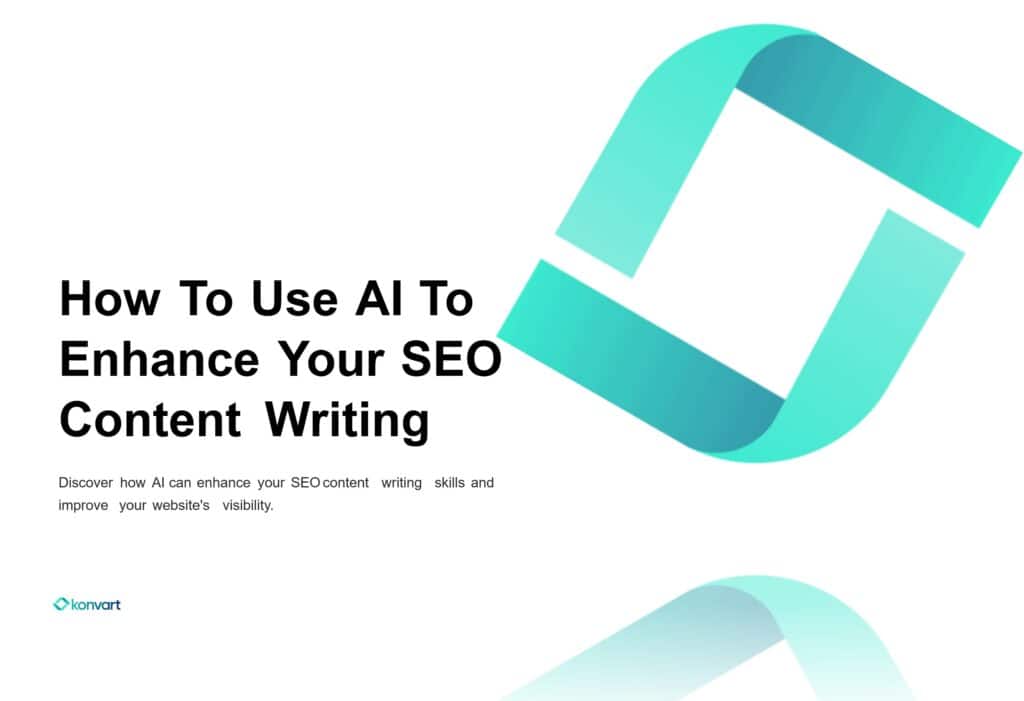Keyword research is a fundamental aspect of SEO that can significantly impact the success of your content strategy. By understanding how to effectively research and target keywords, you can optimize your website for search engines and attract the right audience to your content.
In this article, we will explore the essential steps and strategies for conducting keyword research to improve your SEO efforts.
Why are Keywords and Keyword Research Important to SEO?
The importance of keywords to SEO can be distilled into several key reasons:
1. Visibility and Ranking:
The primary function of keywords in SEO is to improve a page’s visibility and ranking in search engine results pages (SERP). When your content includes keywords that are frequently searched by your target audience, it increases the likelihood that search engines will index your page as relevant to those queries. This leads to higher rankings, which can significantly increase traffic to your site. Research from Advanced Web Ranking shows that the first page of Google captures up to 92% of search traffic clicks, underscoring the importance of ranking for the right keywords.
2. User Experience:
Keywords also play a crucial role in enhancing user experience. Using relevant keywords throughout your content helps users quickly ascertain that your page addresses their questions or needs. This relevance is not only appreciated by users but also by search engines, which aim to provide the most relevant results to their users.
3. Content Strategy:
Incorporating strategic keywords into your content helps guide your content strategy. Keywords can indicate trends and shifts in user behavior, preferences, and needs. By analyzing keyword data, you can identify opportunities to create new content or update existing content, keeping it fresh and aligned with what your audience seeks.
4. Competitive Edge:
Using well-researched keywords that align with high-value queries can give you a competitive edge in your market. By targeting specific niches or long-tail keywords, you can attract more qualified traffic to your site – these are users who are more likely to engage with your content and convert into customers.
5. Measurement and Analytics:
Keywords are measurable elements in SEO. SEO tools can allow you to see which keywords are driving traffic and conversions. This data is invaluable for optimizing your SEO strategy over time, helping you understand what works and what doesn’t.
Essential Concepts of Keyword Research

- Relevance: Choose keywords that are directly related to your content and target audience to ensure that your website ranks for the right searches.
- Search Volume: This has to do with the number of people that are searching with that term every month. Look for keywords with a high search volume to attract more traffic to your website.
- Keyword Difficulty: Most top keyword research tools show the difficulty of the keywords. Keyword difficulty estimates how difficult it may be to rank for a keyword compared to the top ten competitors. This metric typically looks at the domain strength of those competitors, their backlinks, and their SEO results.
- Competition: Analyze the competition for each keyword to determine if it is worth targeting based on your website’s authority and resources. The bigger the keyword in the SERP (compared to your site), the more competitive it will be. In cases like this, it may be best to start with the longer-tail keywords that are less competitive.
- Long-tail Keywords: To attract targeted traffic to your website, consider using long-tail keywords, which are more specific and have less competition.
- User Intent: Understand the intent behind each keyword search to create content that meets the needs of your audience and improves user experience.
- Keyword Variations: Use keyword research tools to find variations and related terms that can help you expand your keyword list and reach a wider audience.
- Trends: Stay updated on keyword trends and seasonal changes to optimize your content for current search patterns and maximize your SEO efforts.
Before diving into keyword research, it’s essential to ask yourself a few key questions to guide your strategy. Consider the goals of your website and target audience.
- What are they searching for?
- What problems are they trying to solve?
Understanding these factors will help you identify relevant keywords that will attract the right audience.
Additionally, think about your competition. What keywords are they ranking for? This can provide valuable insights into potential opportunities and gaps in the market. By asking these questions upfront, you can ensure that your keyword research is focused and effective.
Tips for Keyword Research
- Start with a brainstorming session to generate a list of potential keywords related to your topic or industry.
- Use keyword research tools such as Konvart to identify popular and relevant keywords.
- Look for long-tail keywords that are more specific and have less competition, as they can help you target a niche audience.
- Analyze your competitors’ keywords to see what terms they are ranking for and consider incorporating those into your own strategy.
- Consider the search intent behind each keyword and tailor your content to meet the needs of users searching for that specific term.
- Include a mix of informational, navigational, and transactional keywords in your strategy to attract a variety of users.
- Remember to prioritize relevance when selecting keywords for your SEO efforts.
Having found the right terms for your SEO, ensure that as you target them, you track the keywords. You can find results in Google Search Console and/or a keyword research tool. Keep track of your keyword performance over time and make adjustments as needed to improve your SEO rankings. Also, stay updated on industry news and changes in search algorithms to adapt your keyword strategy accordingly.
Getting Strategic with Search Volume
When conducting keyword research for SEO, it is essential to consider search volume as a key metric. Search volume refers to the number of times a particular keyword is searched for on search engines within a specific timeframe. With search volume data, you can identify high-demand keywords that have the potential to drive significant traffic to your website.
To get strategic with search volume, focus on identifying keywords with a balance of high search volume and relevance to your content. Targeting high-volume keywords can help increase your website’s visibility and attract more organic traffic. However, it is also important to consider the competitiveness of these keywords and prioritize those that align with your website’s niche and target audience.
For a new site or one with little to no SEO results, here’s what I would suggest – focus on long tail phrases with moderate to low search volume and low keyword difficulty for the first few months. As your traffic grows, you can then focus on the more competitive higher search volume terms.
Basic Overview of Search Intent
When determining which format best suits the searcher’s intent, it’s crucial to consider the type of information the searcher is looking for. Search intent is usually classified into four and we looked at them in our post on what is SEO.
For informational queries, formats like blog posts, articles, or guides are ideal. These formats allow for in-depth explanations and analysis of a topic. For transactional queries, formats such as product pages or landing pages work best as they focus on selling a product or service. Navigational queries are best served with formats like FAQs or knowledge bases that provide quick and easy access to specific information.
By understanding the searcher’s intent, you can tailor your content to meet their needs effectively and improve your SEO performance.
Tools for Determining the Value of a Keyword
- Konvart: Konvart is an SEO tool with keyword research features. With Konvart, you can uncover keyword data, including search volume, keyword difficulty, search intent, keyword variations and related terms. This tool is a valuable resource for understanding the potential value of a keyword and finding the right terms to target. You can sign up here.
- Google Keyword Planner: Google Keyword Planner is not exactly an SEO tool – the data provided aligns more with Google Ads than Google search. Nevertheless, for the newbie to SEO who isn’t ready to use a tool yet, Keyword Planner is fine for finding keywords.
- SEMrush: SEMrush provides keyword analysis, including search volume, keyword difficulty, and competitive insights. It also offers suggestions for related keywords and allows you to track your keyword rankings over time.
- Ahrefs: Ahrefs offers data on search volume, keyword difficulty, and traffic potential. It also provides insights into the backlink profile of top-ranking pages for a given keyword.
- Moz Keyword Explorer: Moz’s tool offers comprehensive keyword research data, including search volume, keyword difficulty, and organic click-through rate. It also provides suggestions for related keywords and helps you prioritize keywords based on their potential value.
- SpyFu: SpyFu allows you to spy on your competitors’ keywords, see their ranking history, and identify valuable keywords they are targeting. This can help you uncover new keyword opportunities and optimize your SEO strategy accordingly.
How to Analyze Keywords
To find and choose keywords for your website, start by brainstorming relevant topics and terms related to your business. Use keyword research tools to identify popular and relevant keywords. Look for long-tail keywords that are specific and have lower competition.
When prioritizing keywords for your SEO strategy, it is essential to consider both search volume and competition.
Next, prioritize keywords based on their relevance to your content and target audience. Choose keywords that align with the intent of your blog post and are likely to attract high-quality traffic. Consider the user’s search intent and choose keywords that are likely to lead to conversions.
Additionally, consider the competition for each keyword. Look for keywords with a balance of search volume and competition, as targeting highly competitive keywords may be challenging for newer websites. Aim for a mix of high, medium, and low competition keywords to diversify your strategy.
Lastly, monitor the performance of your chosen keywords using tools like Google Analytics or Ahrefs. Keep track of keyword rankings, organic traffic, and conversions to identify which keywords are driving the most value to your website. Continuously optimize and adjust your keyword strategy based on performance data to improve your SEO efforts over time.
How to Target Keywords
It’s one thing to find the right keywords, it is another to target them perfectly. The most important thing about using your chosen keywords is using them naturally throughout your content, including in the title, headers, paragraphs and meta tags. Furthermore, look at the intent and the question behind that term. For example, for someone searching for “what is keyword research?”, they want to understand the definition and its purpose. On reading that, they may then look into how to do keyword research and tools to use.
When writing your content, it is important that you do not unnecessarily repeat your keyword as that may result in keyword stuffing, which is horrible for your SEO results. Experiment with different keyword variations and synonyms to diversify your keyword strategy and reach a broader audience. Also, incorporate semantic keywords to improve the relevance and context of your content for search engines.
Additionally, when creating SEO titles, it is important to incorporate your target keywords in a natural and compelling way. The title should accurately reflect the content of the page while also enticing users to click through. Avoid keyword stuffing and prioritize readability to ensure that your titles resonate with both search engines and human readers.
As you create content, think about themes.
Themes or Content Silos in Keyword Research

Think of content silos as organizing your website’s content into separate thematic sections or categories. Each silo focuses on a specific topic or keyword group. It’s like compartmentalizing your content to make it easier for both users and search engines to understand what each section is about.
Content silos help in several ways, including:
- Improved Site Structure: With silos, you can create a clear hierarchy that search engines can easily crawl and understand. This can lead to better indexing and ranking of your pages.
- Keyword Relevance: Each silo can target specific keywords or topics, allowing you to optimize content more effectively for those terms. This increases the relevance of your content to search queries, improving your chances of ranking higher.
- Internal Linking: Silos encourage internal linking within related content. When pages within the same silo link to each other, it strengthens the topical relevance of that silo and distributes authority more effectively throughout your site.
- User Experience: Organizing content into silos makes it easier for users to navigate your site and find relevant information. This can increase engagement and reduce bounce rates, both of which are positive signals for search engines.
To create content silos, first identify the main themes or topics that your website covers. These could be broad categories related to your industry or niche. For example, a marketing agency can have SEO as a theme and Google Ads as another – under SEO, they can then have on-page SEO as a theme and technical SEO as another. You can have as many sub-categories as needed.
Once you have your themes, group related content together within each theme. To group them, you can place them in the same post category and internal link them. Think of it as creating a hierarchical structure, with broader themes at the top and more specific topics underneath in order to cover every aspect of your theme.
Finally, optimize each piece of content within a silo for relevant keywords or topics. Ensure that there are clear pathways for users to navigate between related pages within the same silo through internal linking.
Content Strategy & SEO
When conducting keyword research for SEO, it is essential to align your content strategy with your search engine optimization goals. Your content should be tailored to target specific keywords that have high search volume and low competition but are also relevant to your business. If you are a plumber and publishing informative content about plumbing on YouTube and social media, it makes more sense to do the same on your site rather than run after every keyword there is.
In addition to keyword optimization, it is crucial to create high-quality, relevant content that provides value to your audience. Search engines prioritize content that is informative, engaging, and well-structured.
Furthermore, consider implementing image alt text and including other visual content, such as videos, to further enhance your blog’s visibility in search results.
Ready? Start Researching and Writing!
Now that you know what keyword research is, head over to app.konvart.com/signup to sign up and do keyword research for free.
Once you have your keywords, you can start by crafting a compelling headline that includes your primary keyword. This will not only grab the reader’s attention but also signal to search engines what your content is about. Next, generate content with Konvart or a content brief that includes a well-structured outline that organizes your content around your keywords. This will help you stay focused and ensure that your keywords are seamlessly integrated into the text.
As you write, keep in mind the intent behind each keyword and tailor your content to address the needs and questions of your target audience. Use headings, subheadings, and bullet points to break up the text and make it easier for readers to scan and digest the information. Additionally, include internal links to other relevant pages on your website to improve navigation and encourage visitors to explore more of your content.
Once you have finished writing, take the time to proofread and edit your content for grammar, spelling, and overall coherence. Remember that quality content is key to engaging readers and boosting your SEO rankings. So, don’t rush the writing process – take the time to craft well-written, informative, and keyword-rich content that will resonate with both your audience and search engines.
In conclusion, mastering keyword research is essential for SEO specialists and content writers looking to improve their website’s visibility and drive organic traffic. By utilizing tools like Konvart, you can streamline the keyword research process and uncover valuable insights to optimize your content for search engines.

















